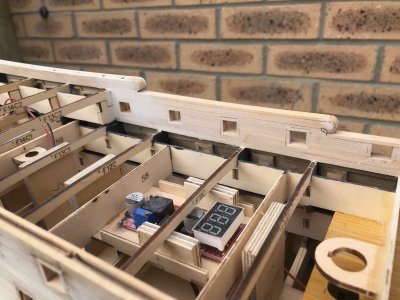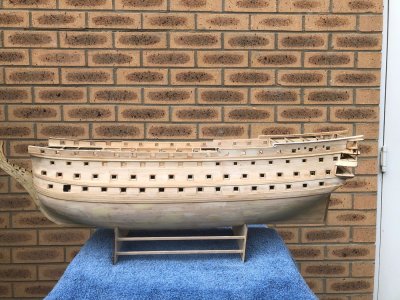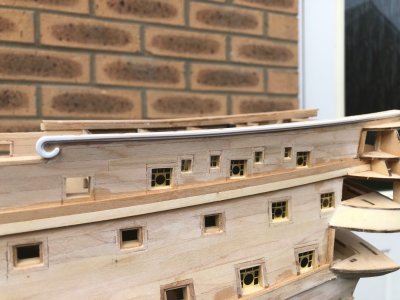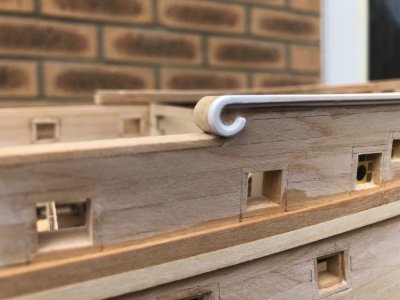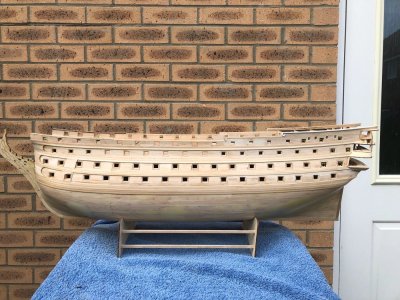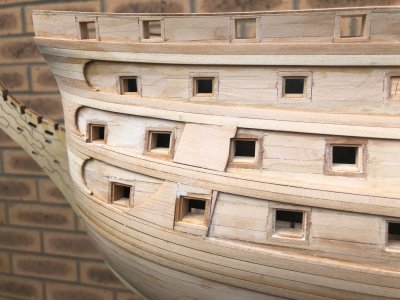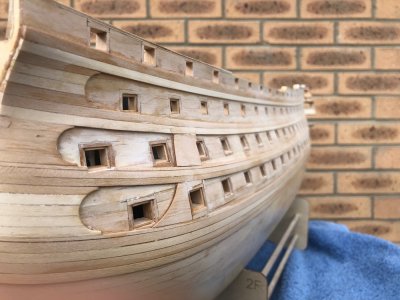With no overtime at work likely until March due to a contract being put back, aside from doing what my Wife needs, I can focus all my Weekends on building.
I have painted the lower sections of the masts. I normally use Tamiya X22A for thinning Acrylic but the Artesania paint just congeals using this and ends up lumpy. I found Vallejo Airbrush thinner 71.161 works a treat. The Artesania paint comes in little bottles but is HIGHLY concentrated and a little goes quite along way when airbrushing.I only use dedicated Acrylic thinners, you do run the risk of over dilution of the Acrylic binders when using just water,IPA etc.
As a side note, primer work was done with Tamiya white fine surface primer which is a lacquer based aerosol. This seals the wood and reduces the grain raising you get applying water based paint to bare wood
I have tweaked the colour scheme to the instructions slightly as I felt the intended scheme looked a little too busy. There is still the back to do above and below the tops but I have put work on hold to allow the varnish to properly harden off. I painted the mast coats in Tamiya WF64 Red Brown to emulate a leather covering.
With mast work temporarily suspended, I moved back to the hull. I have completed adding the ply reinforcement inside the bulwarks as I did on the port side and the hull top is now trimmed to the correct profile. As a side note, the kit Bulkhead ears are very accurate and these are an excellent guide as where to trim to.
I have now started marking the Gunport positions. The port side was done using the kit templates as my guide but I did make some very small adjustments. To ensure symmetry, I am marking the Starboard side out using the Portside as my reference. Duplicating the measurements relative to bulkheads and the top edge of the hull should keep the symmetry. Any discrepancies will glare at you given the striped paint job the hull will receive.
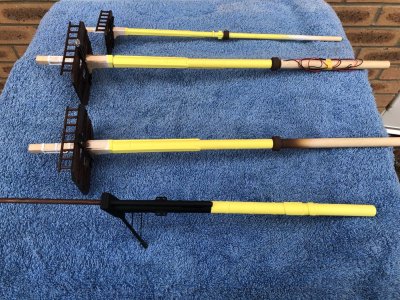
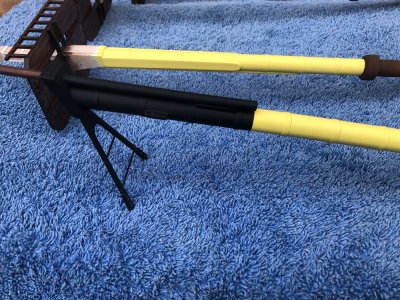
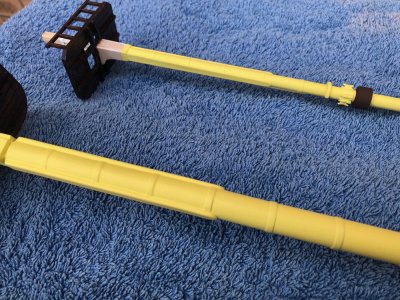
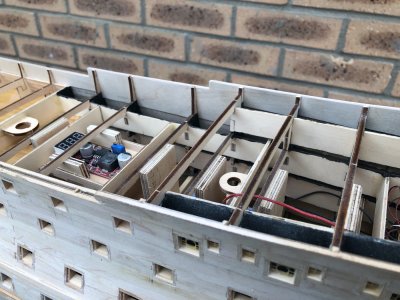
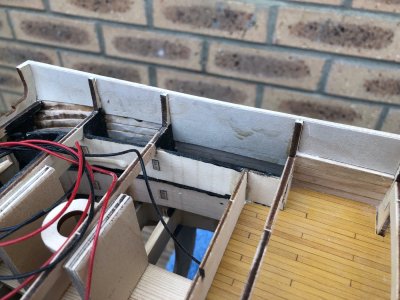
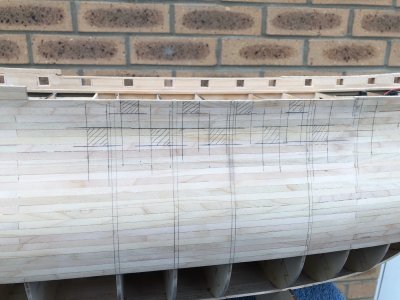

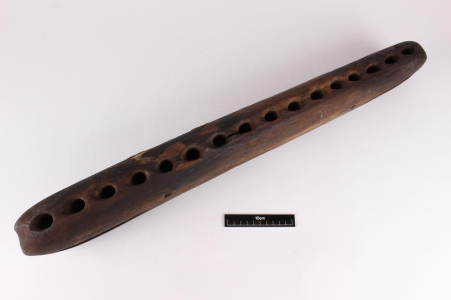
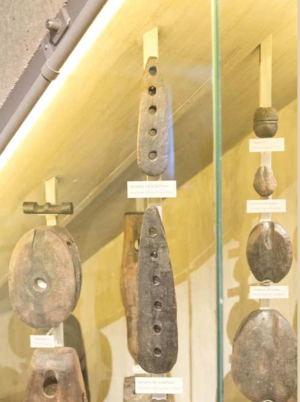










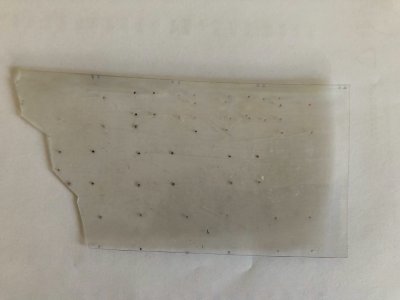
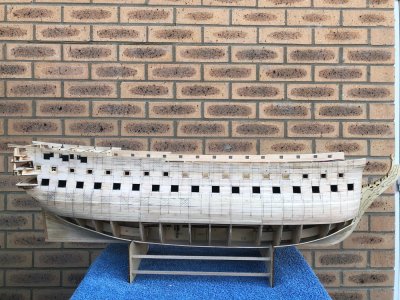
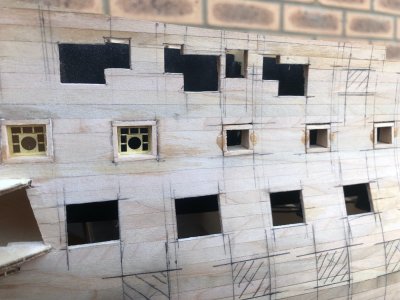
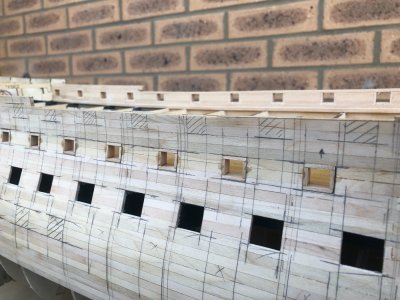
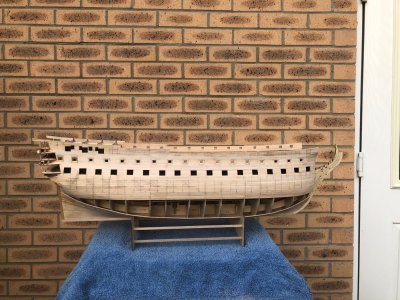
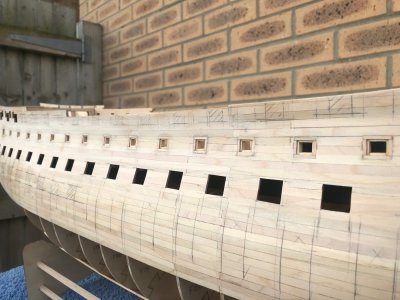
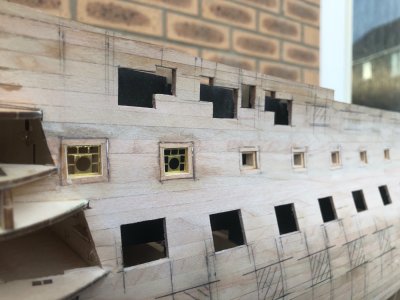
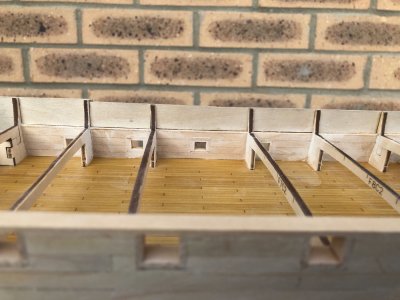
 Good job I have a mental image of what it will look like when done and it will be a little different from the instructions whilst retaining the red, black and white stripes
Good job I have a mental image of what it will look like when done and it will be a little different from the instructions whilst retaining the red, black and white stripes


